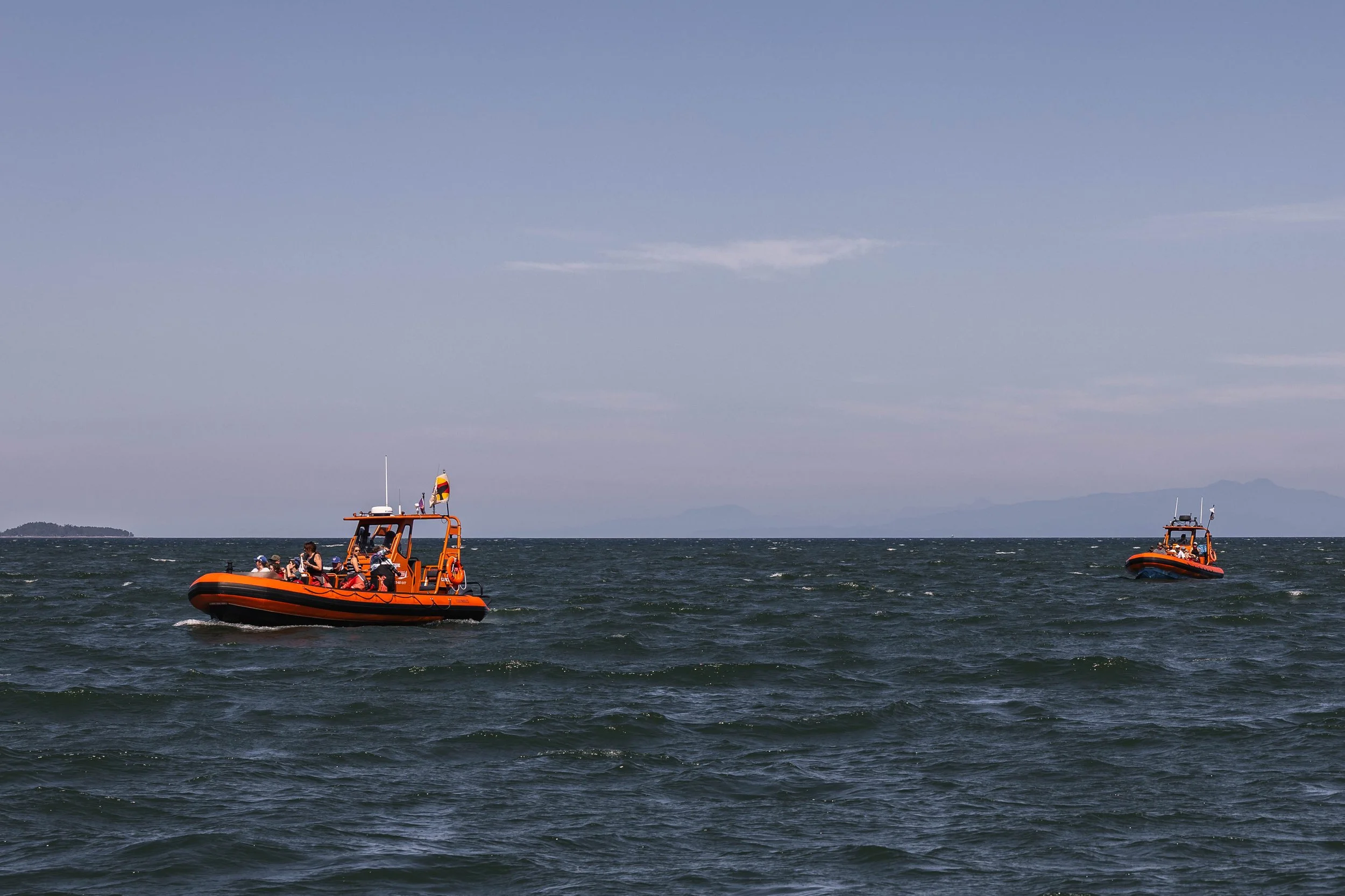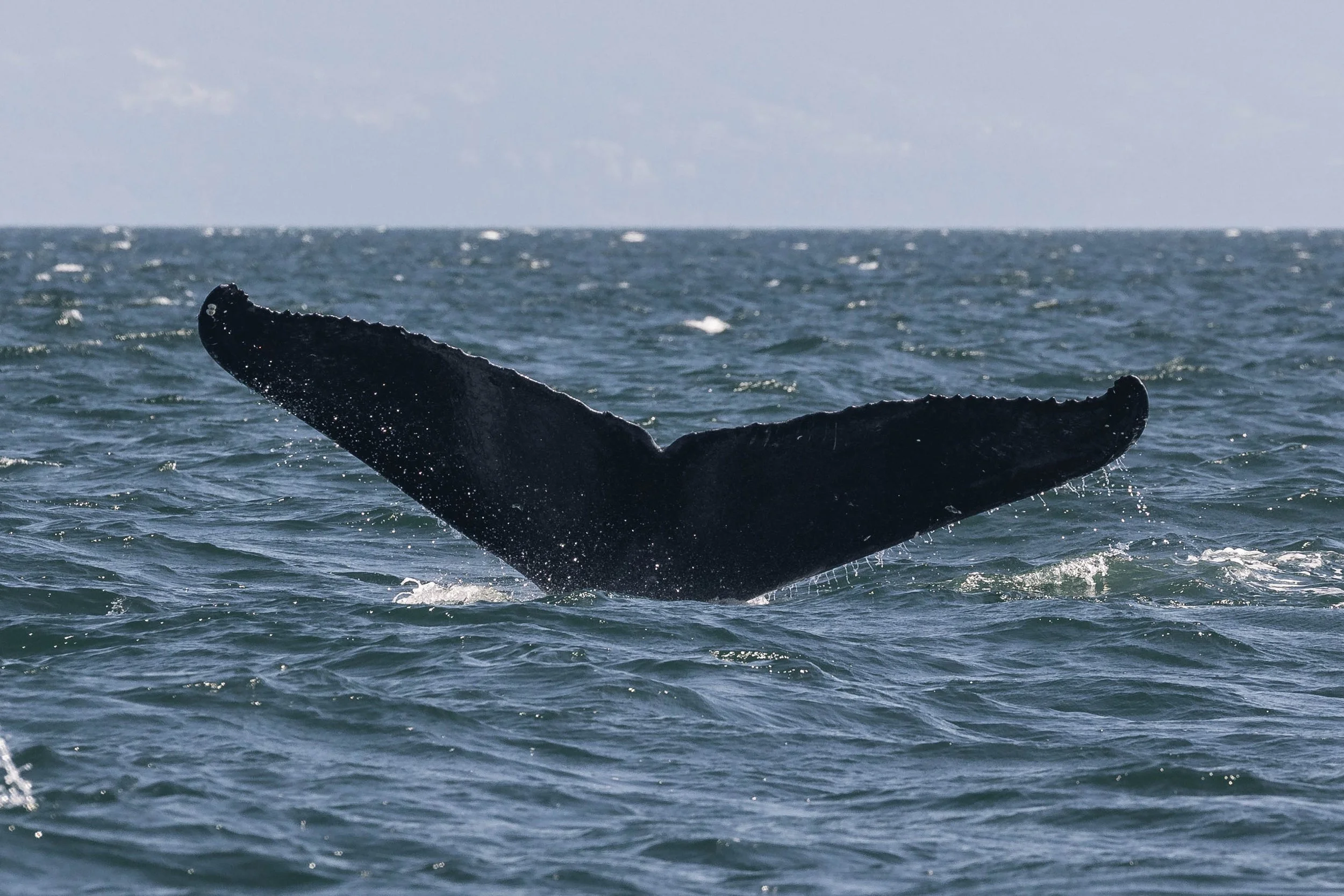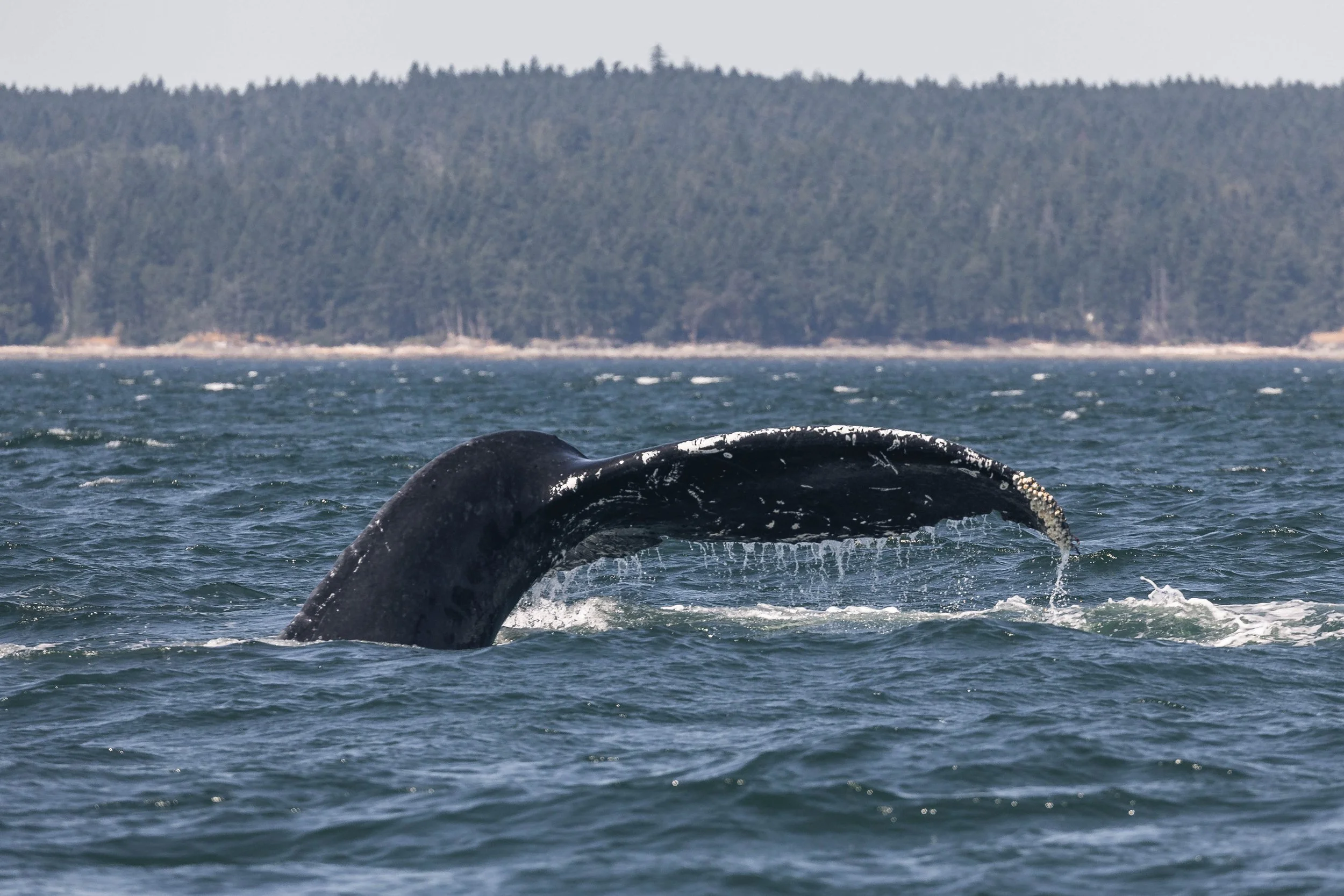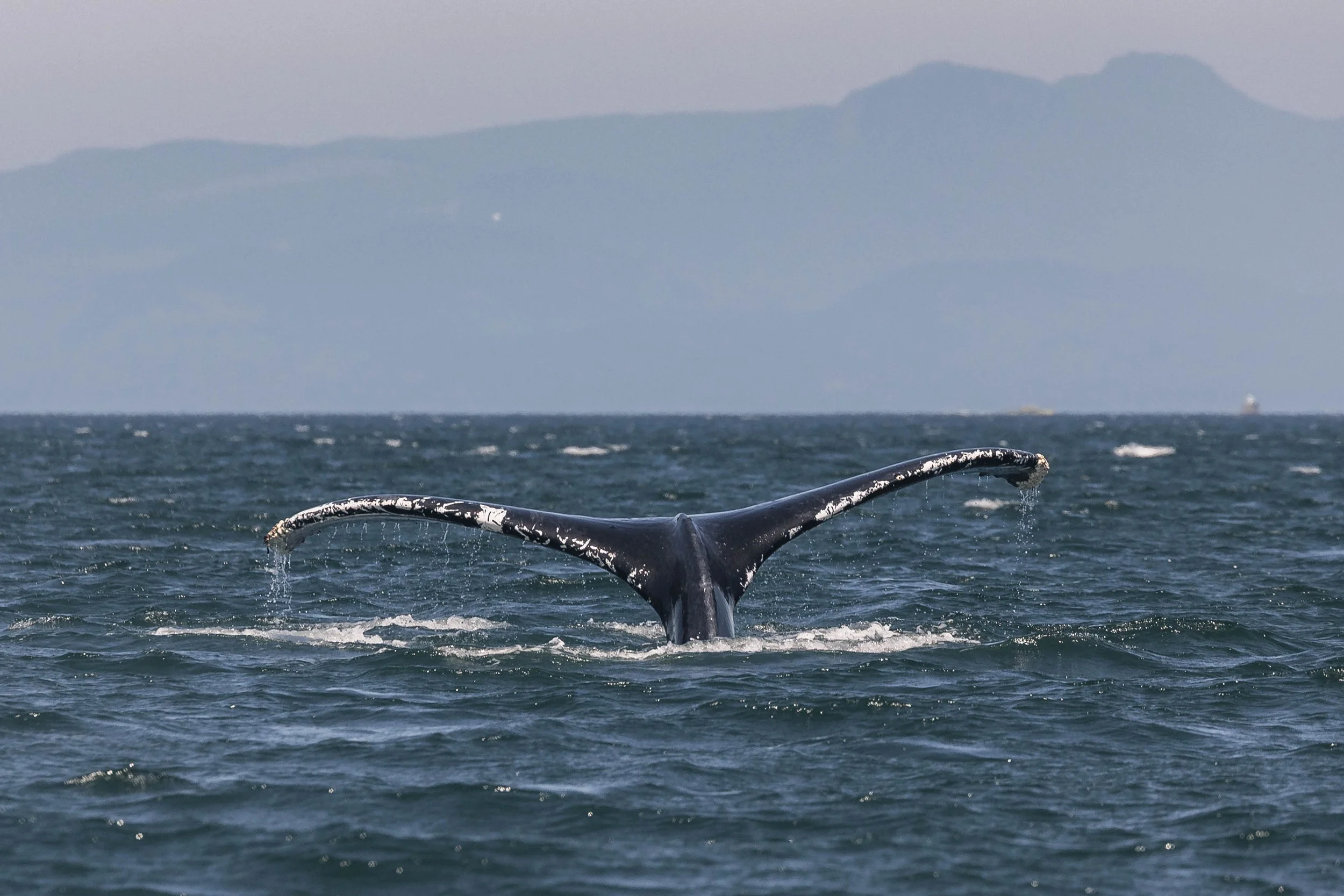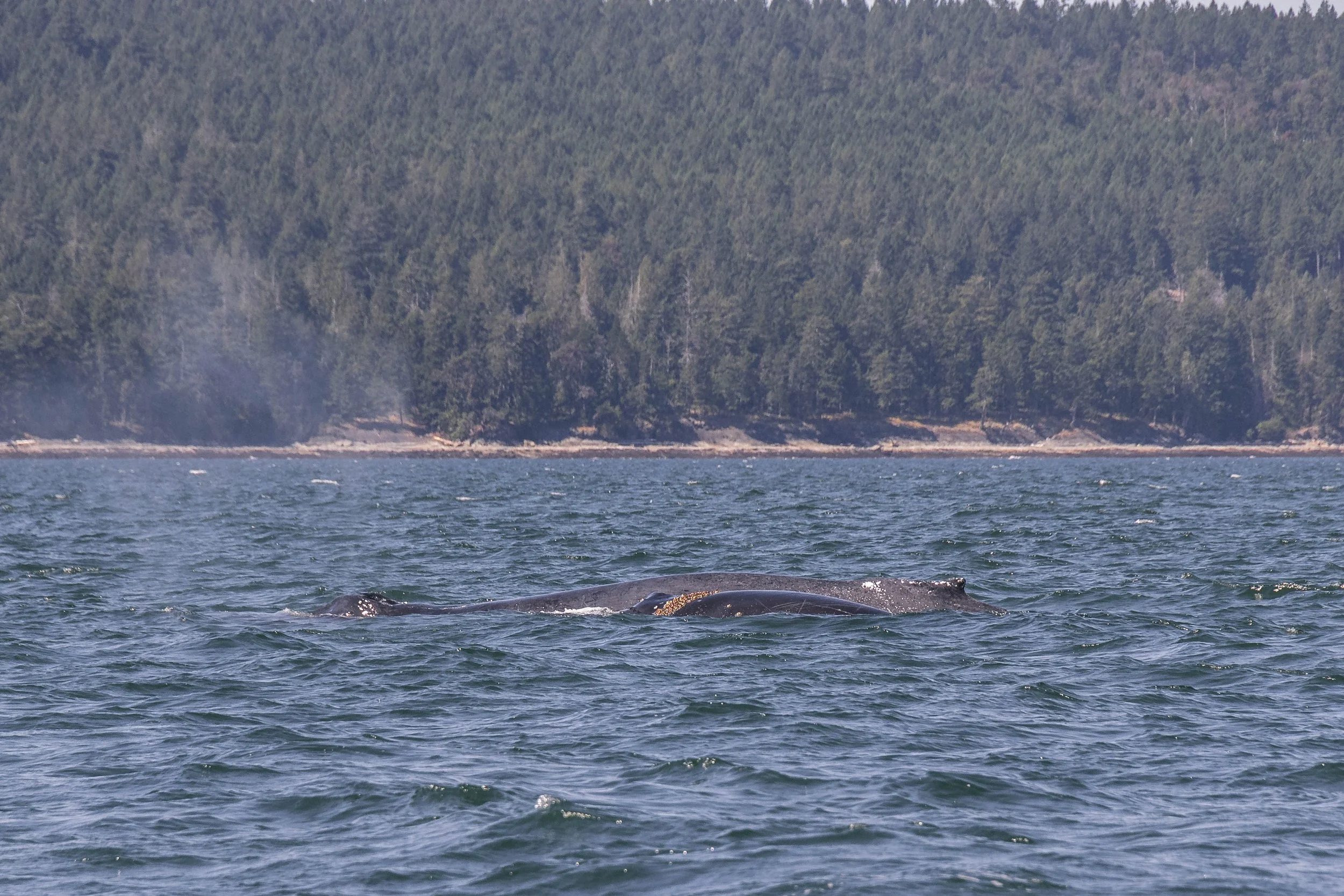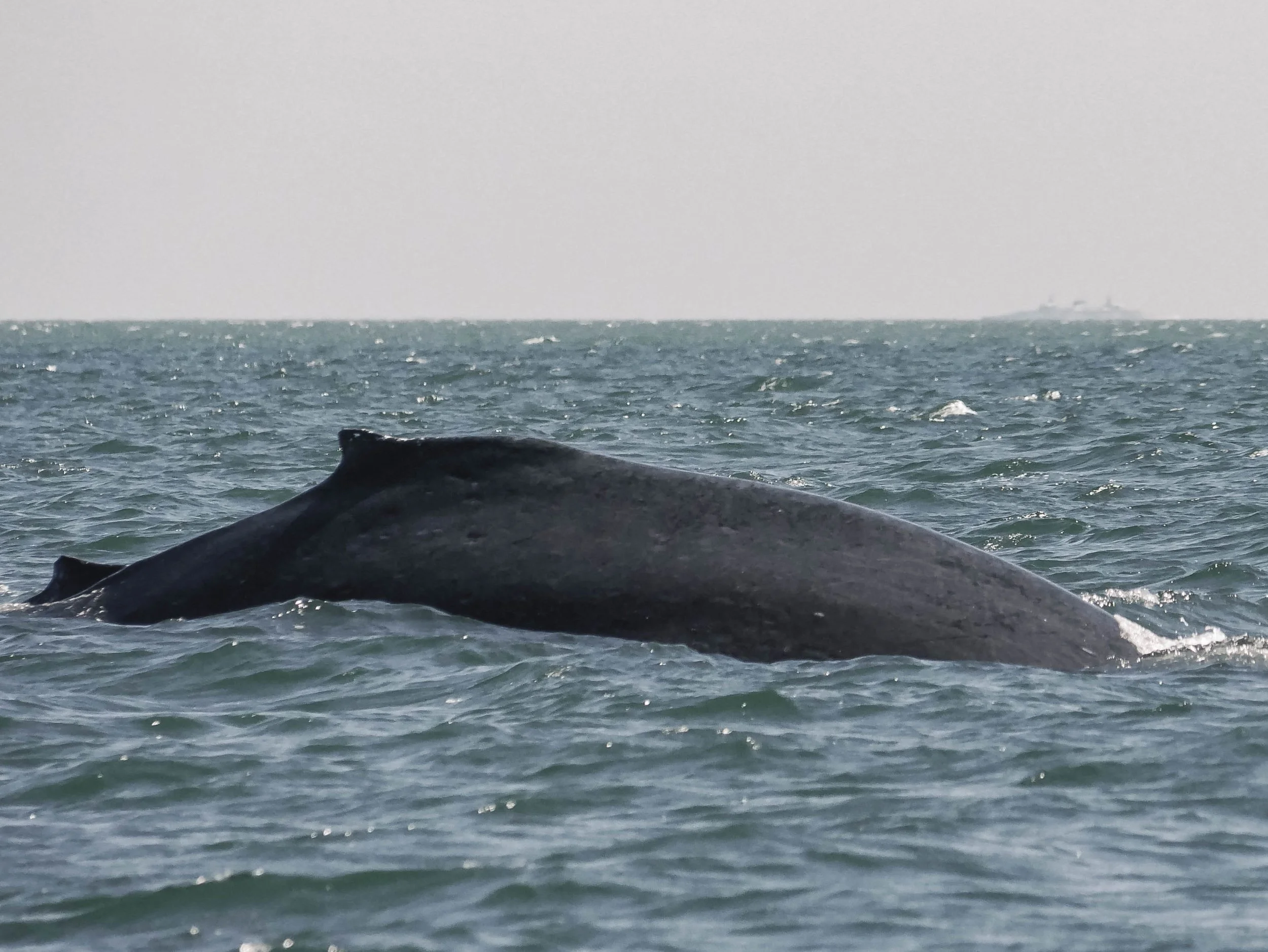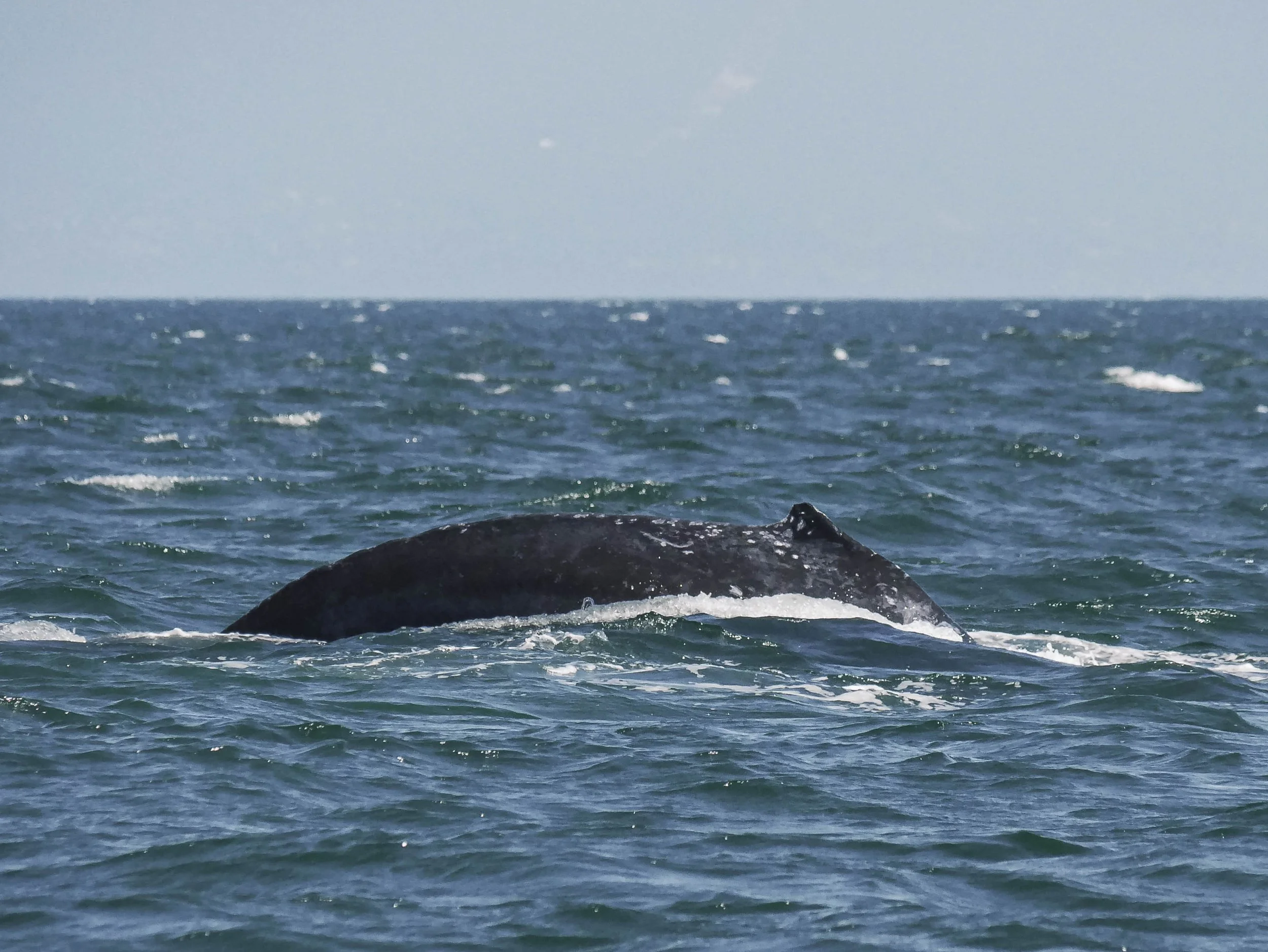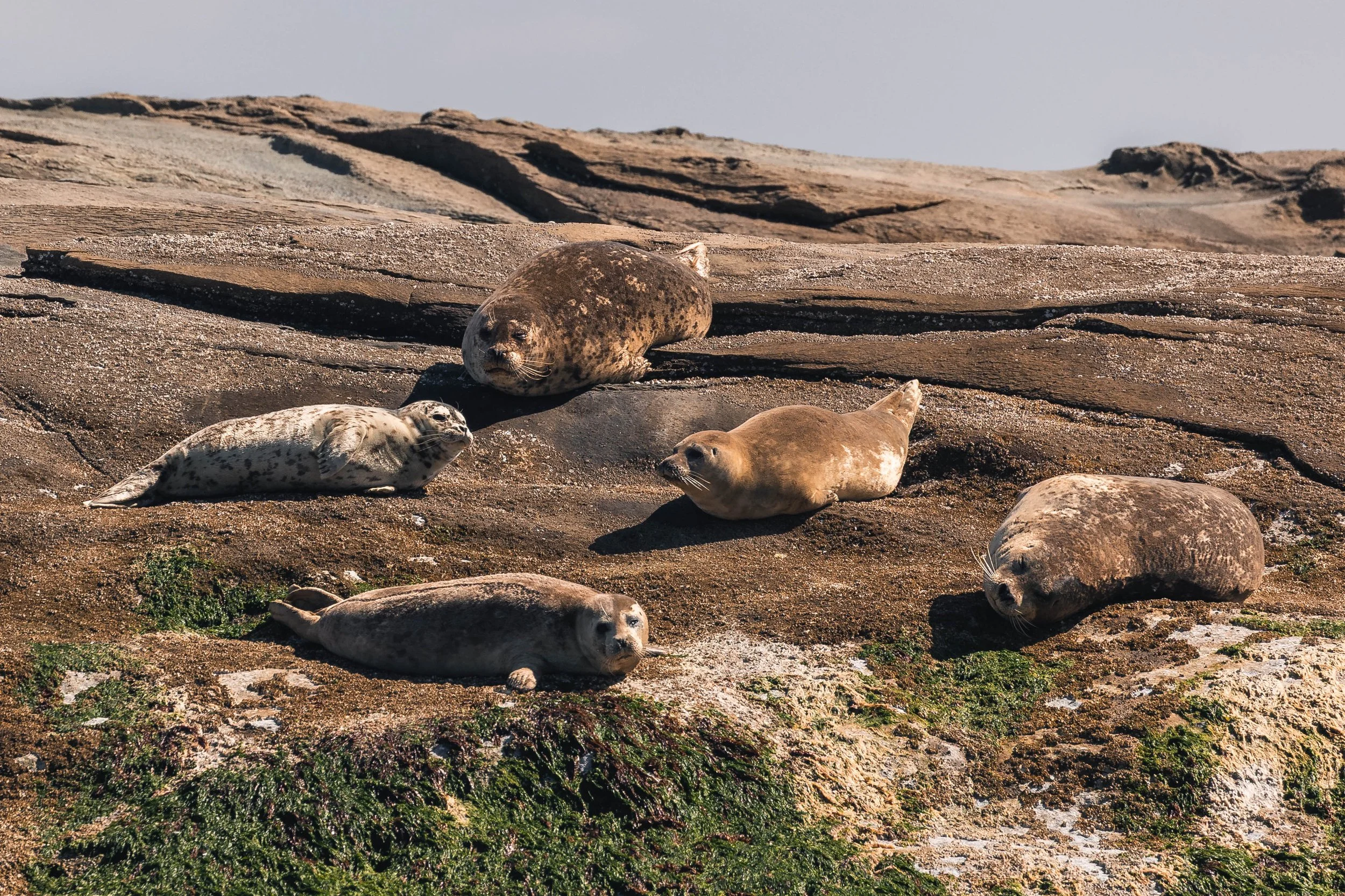August 10, 2025 - Wind, waves and whales!
This morning, the whole fleet pushed off the dock with optimism, even as the waves in the Strait of Georgia gave us a bit of a challenge. Spotting whales in choppy conditions is never easy; whitecaps can look a lot like blows from a distance, but our persistence paid off. After more than an hour of searching, we found what we were hoping for: whales.
It was a familiar trio of humpbacks riding the swell: Barge Boy (KEX0078), Kappa (BCX0158), and Kappiroto BCX0158 calf 2025. These three were moving methodically through the water, taking long dives that suggested feeding. When humpbacks dive for extended periods, it usually means they’re going after dense schools of small fish or krill. Given that Kappa has a calf to nurse, the need for calories is even greater. A fully grown humpback whale can consume over 3,000 pounds of food a day during the summer months, building up the energy reserves that will sustain them through their migration back to tropical breeding grounds, where they largely fast. For a nursing mother, this effort is extended: she needs enough food not only to sustain her own body but to produce the incredibly rich milk that her calf depends on. Kappa needs to consume around 5,000 pounds of food per day!
Humpback whale calves are born after an 11-month gestation, usually in warm tropical waters such as Hawaii or Mexico. The timing is remarkable; births occur in waters where predators are fewer and conditions are calmer, allowing the newborn calf to gain strength before beginning the long migration north. Once here in the nutrient-rich waters of British Columbia, the feeding begins in earnest. Calves nurse frequently, drinking milk that is about 40–50% fat (compared to cow’s milk, which is just 3–4%). This high-fat content allows them to gain as much as 100 pounds a day in their first months of life, layering on blubber that will one day help them through their own migrations.
As for the adults, their menu consists of krill, plankton, herring, anchovies, and other small schooling fish. Humpbacks are baleen whales, using plates of keratin to strain food from enormous mouthfuls of seawater. What’s fascinating is that humpback feeding doesn’t just fuel the whales themselves; it fuels the ocean around them. Whale feces is rich in iron and nitrogen, both essential nutrients that fertilize phytoplankton, the very base of the marine food web. In this way, humpbacks contribute to the health of the ecosystem that sustains them.
We know humpbacks are finding food here, but how exactly they locate it is still something of a mystery. Some theories suggest they may be listening for the sounds of fish schools, or perhaps detecting chemical cues in the water. It is possible that the fist-sized bumps called tubercles that line the humpback's jaw, each contain a stiff hair sensitive to vibrations, similar to a seal or sea lion whisker. Others point to cooperative foraging techniques, like bubble-net feeding, that suggest an incredible level of coordination and communication, which has just recently been seen in our own waters! See here for more information: August 8, 2025, 10:30 AM - Circle Bubblenetting with Sergeant. Research is ongoing, but for now, watching a humpback surface after a long dive is a reminder of just how complex their lives really are.
Alongside the whales today, we also spotted some of our pinnipeds: harbour seals and Steller Sea Lions. Harbour seals are opportunistic feeders, eating fish, squid, and crustaceans, which they hunt with excellent underwater vision and sensitive whiskers that detect vibrations. Steller Sea Lions, the largest of the eared seals, are powerful hunters that can consume 5–6% of their body weight daily, which is 20 to 50 pounds, preying on around 100 different species of fish. While their feeding styles differ from the filter-feeding giants we were with earlier, they are equally important pieces of this ecosystem puzzle.
With whales, seals, and sea lions seen and the waves still rolling beneath us, we eventually turned our bows toward home. Days like this remind us that the Salish Sea is not only a place of beauty but of remarkable resilience and interconnected life. From a nursing humpback calf to the humble phytoplankton fueled by whale waste, every piece plays a role in sustaining the whole.
Photos by Des Poier, Jordan Robinson and Vanessa Vereschahen.
Keta and Cascadia watching the whales. Photo by Jordon Robinson.
Barge Boy fluking. Photo by Desarae Poier.
Kappa on the left Kappiroto diving beside mom. Photo by Desarae Poier.
Look at the size difference between Kappa and her baby! Photo by Desarae Poier.
Can you spot Kappiroto’s dorsal by Kappa’s blowhole? Photo by Desarae Poier.
Kappa diving. Photo by Desarae Poier.
The front of Kappa’s tail. Photo by Desarae Poier.
Going down. Photo by Desarae Poier.
Kappiroto’s tail. Photo by Jordon Robinson.
Mom and baby side by side. Photo by Jordon Robinson.
Just like mommy! Photo by Jordon Robinson.
Can you see all the barnacles on Kappiroto? Photo by Jordon Robinson.
Kappa with Kappiroto in tow. Photo by Vanessa Vereschahen.
Kappa diving. Photo by Vanessa Vereschahen.
Kappiroto’s dorsal. Photo by Vanessa Vereschahen.
Kappa’s flukes. Photo by Vanessa Vereschahen.
Another good look at Kappiroto’s barnacle necklace. Photo by Vanessa Vereschahen.
Kappa’s tail with Kappiroto’s dorsal behind. Photo by Vanessa Vereschahen.
Kappiroto arching for a dive. Photo by Vanessa Vereschahen.
Steller Sea Lions on the rocks. Photo by Desarae Poier.
A cuddle puddle of Stellers with another puddle! Photo by Desarae Poier.
Plump little harbour seals out in the sunshine. Photo by Desarae Poier.

